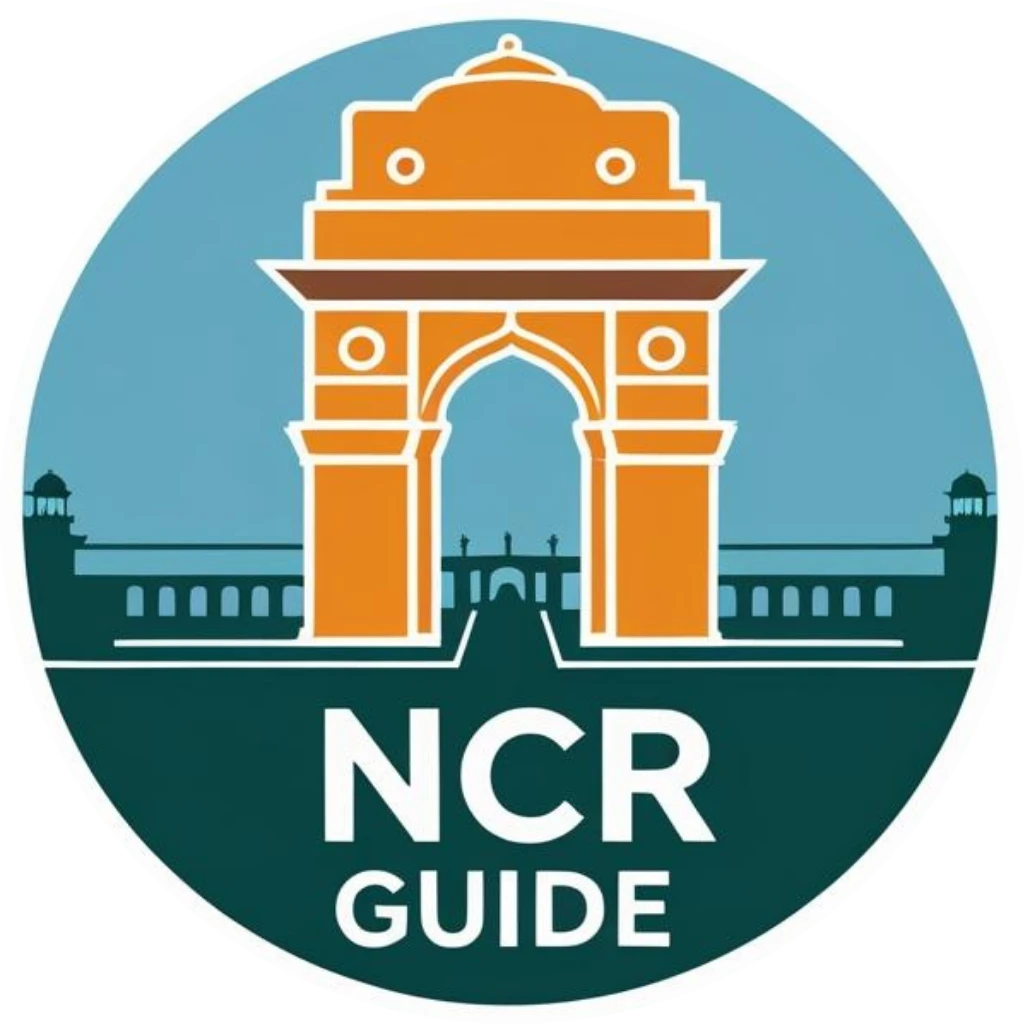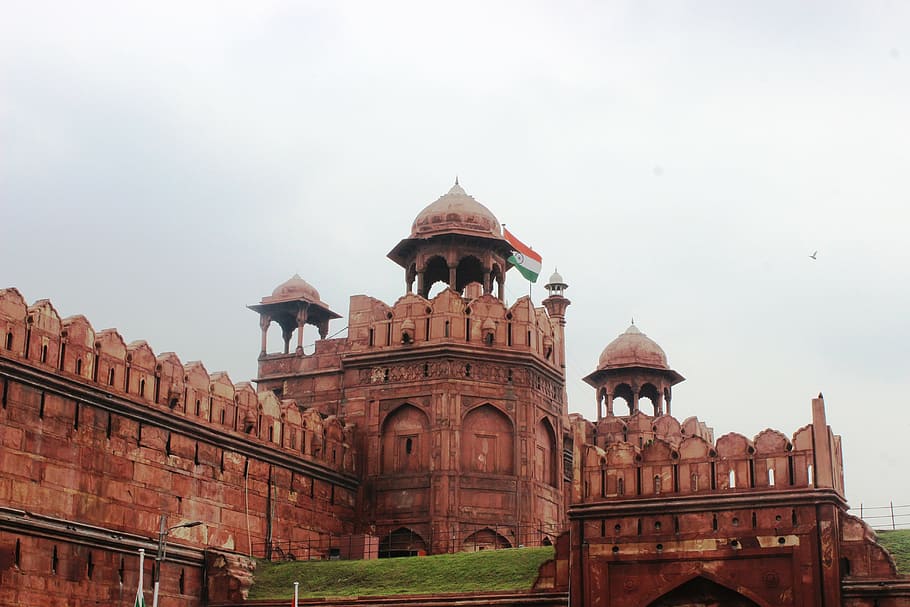Delhi, India’s capital, is a city that seamlessly blends its rich historical heritage with a modern urban landscape. It’s a place where ancient monuments stand tall amidst bustling streets, and serene gardens offer respite from the urban hustle and bustle. In this comprehensive guide, we’ll take you on an extended journey through Delhi’s top tourist attractions, from its historic sites to its museums, galleries, parks, and gardens.
Table of Contents
Historic Sites: Tracing the Footsteps of Emperors
1. Red Fort
History Unveiled: The Red Fort, also known as Lal Qila, is an iconic symbol of India’s independence. Built in the 17th century by Emperor Shah Jahan, it was the main residence of the Mughal emperors for over two centuries.
Captivating Story: The Red Fort witnessed the historic moment when Jawaharlal Nehru, India’s first Prime Minister, hoisted the national flag on August 15, 1947, marking the end of British colonial rule.
2. Qutub Minar
Architectural Marvel: The Qutub Minar, a UNESCO World Heritage Site, is a towering masterpiece of Indo-Islamic architecture. Built in the 12th century, it stands as a testament to Delhi’s rich history.
Captivating Story: Legend has it that the Qutub Minar was built to commemorate the victory of Sultan Qutb-ud-din Aibak over the Hindu ruler Prithviraj Chauhan. The minar’s construction involved dismantling 27 Hindu and Jain temples, and its top floors were damaged by lightning.
3. Humayun’s Tomb
Mughal Elegance: Humayun’s Tomb, another UNESCO World Heritage Site, is an architectural gem from the Mughal era. It served as an inspiration for the construction of the Taj Mahal.
Captivating Story: This tomb is the final resting place of Emperor Humayun. Its construction was commissioned by his widow, Empress Bega Begum, who took great care to ensure the tomb’s grandeur.
4. Purana Qila (Old Fort)
Ancient Citadel: Purana Qila, also known as the Old Fort, is one of Delhi’s oldest forts, dating back to the Mahabharata era. The impressive structure showcases a blend of architectural styles.
Captivating Story: It’s said that the Pandava brothers, heroes of the Mahabharata, founded Indraprastha (an ancient city) at the site of Purana Qila. The fort has witnessed centuries of history.
5. Tughlaqabad Fort
Medieval Might: Tughlaqabad Fort, built by Sultan Ghiyas-ud-din Tughlaq, is a massive stone fortification that once housed Delhi’s ruling elite.
Captivating Story: This fort is known for its grandiosity and the curse that is said to have haunted the Tughlaq dynasty. Legend has it that the Sultan’s hasty construction led to a curse that ultimately led to his downfall.
6. India Gate
War Memorial: India Gate is a war memorial built in honor of the soldiers who lost their lives in World War I. It stands as a solemn reminder of their sacrifice.
Captivating Story: The Amar Jawan Jyoti, an eternal flame at India Gate, burns in memory of the unknown soldiers who gave their lives in the 1971 Indo-Pak War.
7. Jantar Mantar
Astronomical Marvel: Jantar Mantar is a collection of 13 architectural astronomy instruments built by Maharaja Jai Singh II in the 18th century.
Captivating Story: The instruments at Jantar Mantar were used to observe the heavens and provide astronomical data. It’s an ode to India’s scientific heritage.
Museums and Galleries: A Glimpse into India’s Art and Culture
8. National Museum
Cultural Showcase: The National Museum houses a vast collection of artifacts, paintings, sculptures, and manuscripts, showcasing India’s rich cultural and historical heritage.
Captivating Story: The museum’s star attraction is the Harappan Gallery, which features artifacts from the ancient Indus Valley Civilization, one of the world’s oldest urban centers.
9. National Gallery of Modern Art (NGMA)
Artistic Haven: NGMA is a paradise for art enthusiasts. It features an impressive collection of modern and contemporary Indian art, including works by renowned artists.
Captivating Story: The NGMA often hosts exhibitions that push the boundaries of art. Visitors have marveled at groundbreaking installations and thought-provoking exhibits.
10. Gandhi Smriti
Mahatma’s Legacy: Gandhi Smriti, formerly known as Birla House, is the place where Mahatma Gandhi spent the last 144 days of his life. It’s a solemn memorial to the Father of the Nation.
Captivating Story: It was at Gandhi Smriti that Mahatma Gandhi was assassinated on January 30, 1948. The room he occupied has been preserved as it was on that fateful day.
11. National Handicrafts & Handlooms Museum (Crafts Museum)
Craftsmanship Showcase: The National Handicrafts & Handlooms Museum is a treasure trove of India’s traditional crafts and textiles.
Captivating Story: Visitors can explore a recreated Indian village showcasing diverse regional art and craft traditions, making it a unique experience.
Parks and Gardens: Oasis of Tranquility
12. Lotus Temple (Bahá’í House of Worship)
Architectural Wonder: The Lotus Temple, with its distinctive lotus-shaped architecture, is a Bahá’í House of Worship. It’s a place of meditation and reflection for people of all faiths.
Captivating Story: The Lotus Temple is renowned for its architectural beauty and its message of unity and peace. Its lotus shape symbolizes purity and enlightenment.
13. Garden of Five Senses
Sensory Retreat: The Garden of Five Senses is a lush, landscaped garden that stimulates all five senses. It’s an oasis of calm amidst the city’s chaos.
Captivating Story: The garden hosts events and festivals throughout the year, including cultural performances and art exhibitions, making it a cultural hub as well as a natural retreat.
14. Sunder Nursery
Heritage Park: Sunder Nursery is a newly restored heritage park that combines Mughal and British-era landscaping styles.
Captivating Story: The park’s restoration uncovered hidden Mughal-era tombs and structures, adding layers of history to its serene ambiance.
Popular and Enticing Stories
1. The Curse of the Kohinoor Diamond
The legendary Kohinoor Diamond, once housed in the Red Fort’s Peacock Throne, has a history steeped in bloodshed and misfortune. It passed through the hands of emperors and conquerors, including Shah Jahan and the British Empire. Its captivating story is one of intrigue, theft, and controversy.
2. The Mysterious Iron Pillar
Located in the Qutub Minar complex, the Iron Pillar of Delhi is a testament to ancient metallurgical expertise. What’s captivating about it is that it has remained rust-free for over a thousand years, despite being exposed to the elements. Scientists are still unraveling the secrets behind this remarkable artifact.
3. The Lost City of Ferozabad
Ferozabad, also known as Feroz Shah Kotla, was once a thriving city during the reign of Feroz Shah Tughlaq. The city featured grand palaces, gardens, and public utilities. Today, it lies in ruins, but its history and the mysteries of its decline continue to captivate historians and archaeologists.
Conclusion: A Tapestry of Delhi’s Attractions
Delhi’s tourist attractions are not merely places to visit; they are stories waiting to be discovered. From the grandeur of historic sites like the Red Fort and Qutub Minar to the artistic treasures in museums like the National Gallery of Modern Art, and the tranquility of parks like Lodhi Gardens, Delhi offers a diverse range of experiences for travelers and history enthusiasts alike. These attractions are not just places; they are chapters in Delhi’s vibrant narrative.
Frequently Asked Questions (FAQs) About Delhi’s Tourist Attractions
Q1: What are the must-visit historic sites in Delhi?
A: Delhi boasts a rich history, and some must-visit historic sites include the Red Fort, Qutub Minar, Humayun’s Tomb, Purana Qila, Tughlaqabad Fort, India Gate, and Jantar Mantar.
Q2: Are there any interesting stories associated with Delhi’s historic sites?
A: Yes, Delhi’s historic sites are steeped in intriguing stories. For example, the Red Fort witnessed India’s independence, Qutub Minar’s construction involved dismantling temples, and Tughlaqabad Fort is believed to be cursed.
Q3: What museums and galleries should I explore in Delhi?
A: Delhi offers a range of museums and galleries. Don’t miss the National Museum, National Gallery of Modern Art (NGMA), Gandhi Smriti, and the National Handicrafts & Handlooms Museum.
Q4: What is the best time to visit the Lotus Temple?
A: The Lotus Temple, a Bahá’í House of Worship, is open to visitors throughout the year. However, the best time to visit is during the mild weather of spring or autumn to fully enjoy the architectural beauty and serenity.
Q5: Are there any hidden gems among Delhi’s parks and gardens?
A: Yes, one hidden gem is Sunder Nursery, a recently restored heritage park with a blend of Mughal and British-era landscaping. It’s a serene oasis in the city.
Q6: How can I learn more about the history of Delhi’s attractions?
A: Many of Delhi’s attractions have audio guides, guided tours, or information plaques that provide historical context. Additionally, you can hire local tour guides for a deeper insight.
Q7: Are there any evening light and sound shows at historic sites?
A: Yes, several historic sites in Delhi, including the Red Fort and Purana Qila, offer evening light and sound shows that narrate the history of these sites in a captivating way.
Q8: Are these attractions family-friendly?
A: Absolutely! Most of Delhi’s tourist attractions are family-friendly and offer something for visitors of all ages. Parks and gardens are great for kids, while historic sites and museums are educational and enjoyable for everyone.
Q9: Can I find places to eat near these attractions?
A: Yes, many of Delhi’s tourist attractions have nearby restaurants or food stalls where you can enjoy a meal or grab a snack. Delhi is famous for its street food, so don’t miss trying local delicacies.
Q10: Is there a Delhi tourist pass for these attractions?
A: Yes, Delhi Tourism offers a ‘Delhi Tourism Hop-On, Hop-Off’ bus service that allows you to explore multiple attractions with a single pass. It’s a convenient way to visit Delhi’s top tourist spots.

